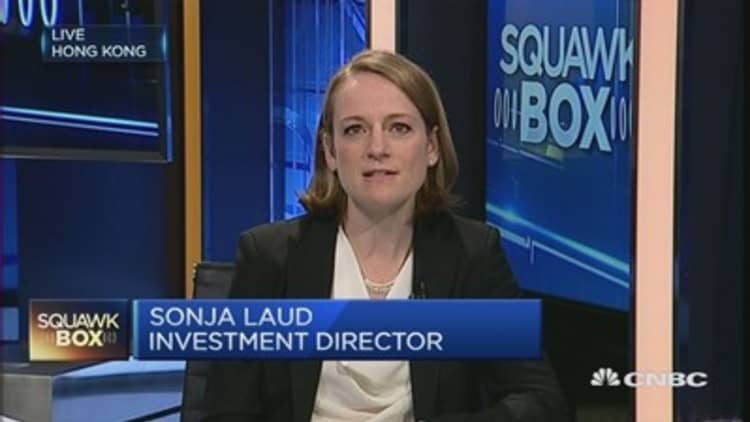
Singapore may have averted a technical recession in the third quarter, but foreign exchange strategists recommend staying short the local currency against the U.S. dollar, forecasting renewed weakness into 2016.
The Singapore dollar gained 0.9 percent against the greenback to $1.388 – its strongest since mid-2010 – on Wednesday after the city state's third quarter gross domestic product (GDP) growth beat estimates and the Monetary Authority of Singapore (MAS) refrained from easing monetary policy as aggressively as a section of the market had anticipated.
MAS, the country's de facto central bank which uses the currency rather than interest rates to guide the economy, said it would reduce the slope of its currency band, to "slightly" lessen the rate at which the Singapore dollar is allowed to appreciate.
Many had been expecting a bolder move including lowering the mid-point of the Singapore dollar's trading band to allow the currency to weaken.
"Today's move can be considered only a token easing…we see a chance of further easing," said Khoon Goh, senior FX strategist at ANZ.
"What will get them to ease again is the inflation profile undershooting their forecasts. In that regard, the next CPI print on 23 October will be an important read," he said.
The MAS manages monetary policy by letting the Singapore dollar rise or fall against the currencies of its main trading partners within an undisclosed trading band based on its nominal effective exchange rate (NEER). It intervenes in the market to keep the rate within the band and adjusts the slope, width and center of that band when it wants to alter the pace of appreciation or depreciation of the currency.
In its policy statement published on Wednesday, MAS said it projects the Singapore economy to expand at a modest pace for the rest of 2015 and in 2016 helped by firmer U.S. growth, but noted that the subdued global economy will exert a drag on the country's external-oriented sectors in the quarters ahead.
Expectations of further easing are likely to weigh on the Singapore dollar, says Goh, who sees the currency depreciating to $1.45 by year-end and $1.48 in 2016. The Singapore dollar has already lost 4.6 percent against the greenback so far this year.
Read MoreSingapore avoids technical recession, Q3 GDP grows 0.1%
Another risk for the Singapore dollar is monetary tightening by the U.S. Federal Reserve, which would lead to renewed upward pressure on the U.S. dollar.
"We are still expecting the Fed to hike rates in December, if our view is right that will lead to renewed downward pressure on Asian currencies like the Singapore dollar," Goh said.
Nizam Idris, head of currencies and fixed-income strategy at Macquarie Bank shared a similar view.
"The MAS' move was too mild; an inter-meeting easing cannot be ruled out," said Idris. "And if you price in a Fed rate hike, that should put a floor under U.S. dollar/Singapore dollar," he said.
Idris forecasts the Singapore dollar will end the year at $1.43, before weakening to $1.45 during the first quarter of 2016.


